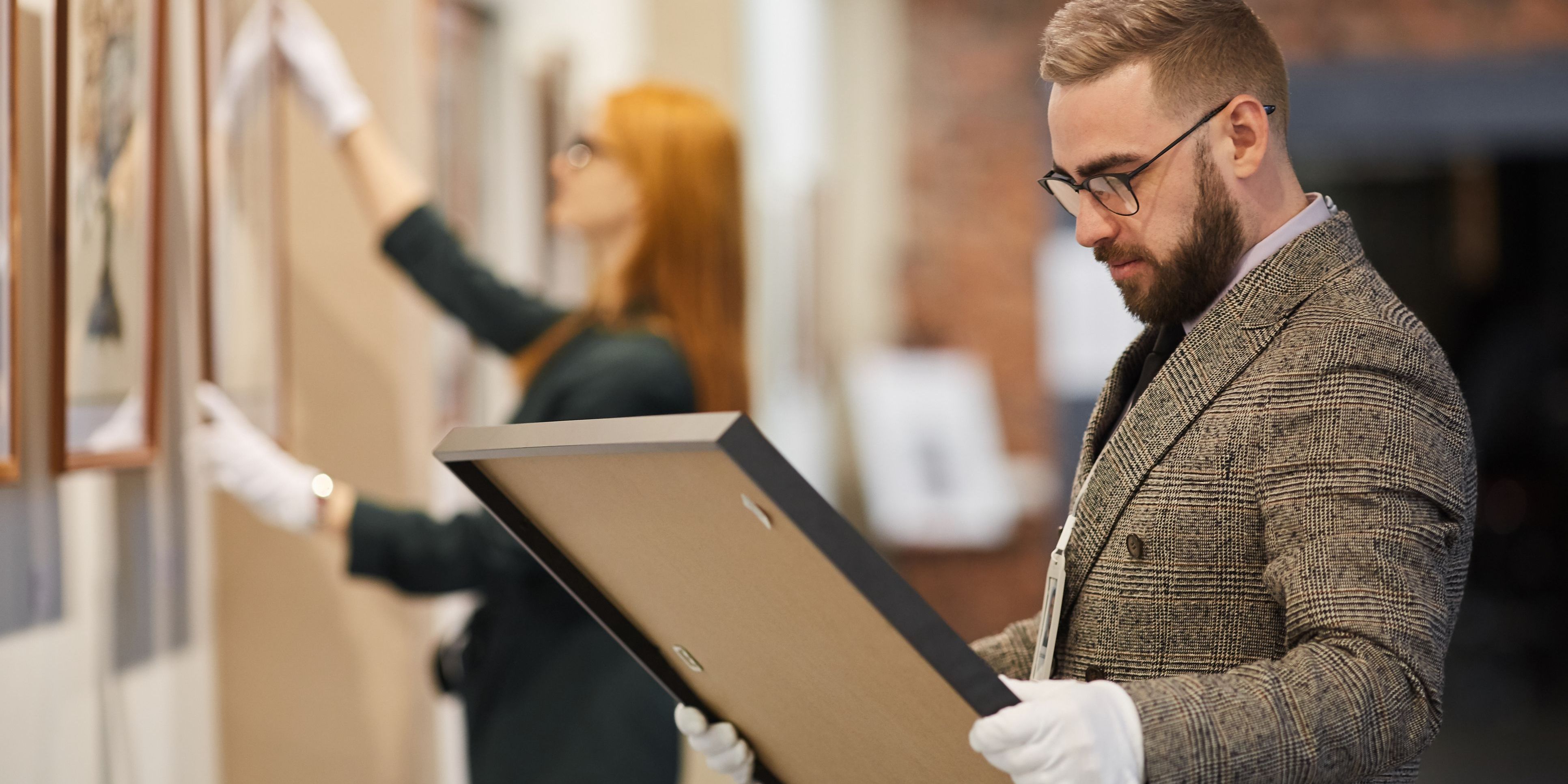What is an Art Appraiser?
An art appraiser is a professional who determines the value of artworks, antiques, and other cultural items. They use their knowledge of art history, current market trends, and the condition of the piece to provide an accurate estimate of its worth. Art appraisers can work for auction houses, insurance companies, museums, or as independent consultants, helping clients understand how much their collections are worth.
The job of an art appraiser includes doing thorough research to find out the history, importance, and current demand for an artwork. They consider factors such as the artist's reputation, whether the piece is genuine, and its past sale history. Art appraisers need to have a good eye for detail and often work with many types of art, including paintings, sculptures, and decorative objects.
Art appraisers offer valuable services like determining insurance values, helping with estate planning, and assisting in buying or selling art. Their expertise is important when a formal record of an artwork's value is needed, such as during legal disputes or for tax purposes. They often write detailed reports and give advice based on their evaluations.
What does an Art Appraiser do?

Duties and Responsibilities
The duties and responsibilities of an art appraiser include the following:
- Conducting Research: Art appraisers perform extensive research on artworks to understand their historical context, provenance (the history of ownership), and significance within the art market. This includes studying the artist's background, examining similar works, and analyzing current market trends.
- Evaluating Artworks: They assess the condition, authenticity, and quality of the artwork to determine its value accurately. This evaluation includes examining the materials used, craftsmanship, and any restoration work that has been done.
- Creating Appraisal Reports: Art appraisers prepare detailed reports that outline their findings, including the artwork’s description, condition, market analysis, and final value estimate. These reports are often used for legal, insurance, and tax purposes.
- Providing Consultations: They offer advice to clients, collectors, and institutions on buying, selling, or insuring artworks. This may involve guiding clients on how to build a collection or make informed investment decisions.
- Staying Informed: Art appraisers must stay updated on the art market, trends, and new developments in the field. This includes attending art fairs, auctions, and exhibitions, as well as networking with other professionals in the industry.
- Networking and Building Relationships: They often build relationships with artists, collectors, galleries, and other appraisers to enhance their knowledge and credibility in the field. Networking can lead to new opportunities and access to valuable information.
Types of Art Appraisers
There are several types of art appraisers, each specializing in different aspects of the art world. Here are some common types:
- Fine Art Appraiser: Focuses on the appraisal of paintings, sculptures, and other visual artworks. They typically have extensive knowledge of art history, techniques, and market trends.
- Antique Appraiser: Specializes in assessing the value of antique artworks, including furniture, ceramics, and decorative arts. They often have expertise in historical periods and styles.
- Specialized Appraiser: Concentrates on a specific category of art, such as photography, prints, or textiles. These appraisers possess in-depth knowledge of their chosen field and its unique valuation criteria.
- Real Estate Art Appraiser: Works in the real estate sector, appraising artworks that are part of residential or commercial properties. They evaluate how art enhances property value and assess art collections in real estate transactions.
- Corporate Art Appraiser: Focuses on evaluating art collections owned by corporations or businesses. They help companies assess the value of their art investments for financial reporting, insurance, or sales purposes.
- Insurance Appraiser: Specializes in providing valuations for insurance purposes, ensuring that artworks are properly insured based on their current market value. They often work with insurance companies and collectors to determine coverage needs.
- Estate Appraiser: Works with estates and trusts to evaluate art collections for inheritance or estate tax purposes. They ensure that the artworks are accurately valued for legal and financial documentation.
- Auction House Appraiser: Collaborates with auction houses to determine the value of artworks being sold at auction. They provide expertise on current market trends and assist in setting reserve prices for pieces.
Art appraisers have distinct personalities. Think you might match up? Take the free career test to find out if art appraiser is one of your top career matches. Take the free test now Learn more about the career test
What is the workplace of an Art Appraiser like?
The workplace of an art appraiser can vary widely depending on their specific role and area of expertise. Many art appraisers work in offices, either independently or as part of a firm, where they conduct research, analyze artworks, and prepare appraisal reports. These office environments are often filled with reference materials such as art history books, market reports, and databases that assist appraisers in determining the value of artworks. The workspace may also include digital tools and software to document and manage appraisal information efficiently.
In addition to office work, art appraisers frequently spend time in galleries, auction houses, or museums. Here, they interact with clients, view artworks firsthand, and assess their condition and authenticity. This hands-on experience is essential for developing an accurate appraisal, as seeing the artwork in person allows appraisers to evaluate factors such as craftsmanship, provenance, and market demand. Visiting various locations helps appraisers stay current with trends and shifts in the art market, enabling them to provide informed valuations.
Some art appraisers also travel to clients' homes or corporate collections to assess artworks on-site. This aspect of the job allows for a more personalized experience, as appraisers can discuss the client's needs and preferences while examining the art. These visits may involve evaluating artworks for insurance purposes, estate planning, or sales.